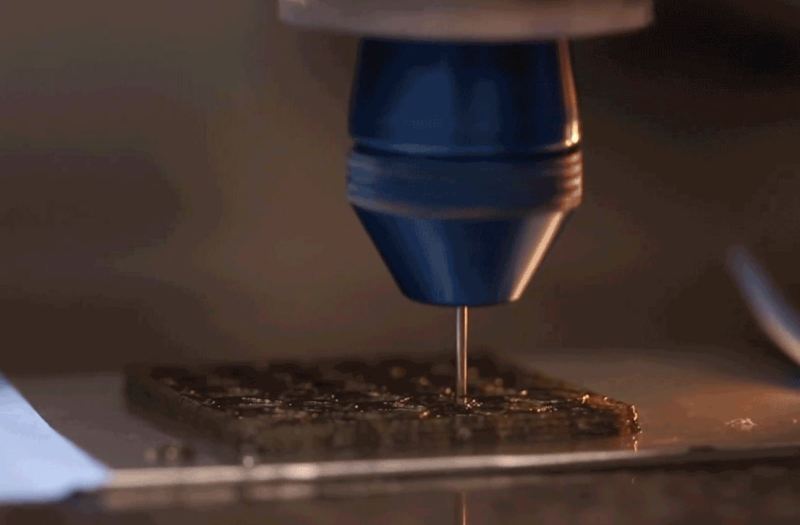For all that we love 3D printers, sometimes the final print doesn’t turn out as durable as we might want it to be.
Aiming to mimic the properties of natural structures such as wood, bone, and shells, a research team lead by [Jennifer A. Lewis] at Harvard John A. Paulson School of Engineering and Applied Sciences’ Lewis Lab have developed a new combined filament and printing technique which they call rotational 3D printing.
Minuscule fibres are mixed in with the epoxy filament and their controlled orientation within the print can reinforce the overall structure or specific points that will undergo constant stresses. To do so the print head is fitted with a stepper motor, and its precisely programmed spin controls the weaving of the fibres into the print. The team suggests that they would be able to adapt this tech to many different 3D printing methods and materials, as well as use different materials and printed patterns to focus on thermal, electrical, or optical properties.
Be it adding carbon nano-tubes or enlisting the expertise of spiders to refine our printed materials, we’re looking forward to the future of ever stronger prints. However, that doesn’t mean that existing methods are entirely lacking in endurance.
[Thanks for the tip, Qes!]















Cool. I’m gonna look a little closer into what the specifically mean by “precisely programmed spin controls.” Did that filament with the continuous carbon fiber ever go anywhere? They have tons of finely chopped carbon fiber filaments, but having a continuous thread which runs through the whole print is pretty cool.
The actual paper is much more enlightening about how it’s done. http://www.pnas.org/content/early/2018/01/17/1715157115.full.pdf
They are tiny fibers that will naturally align themselves vertically while being extruded. Spinning the extruder causes the alignment of the fibers to be different than the material extruded just prior to it. The PDF has pictures that make it clear.
I don’t know how strong are a couple of twisted fibers embedded in a filament compared to woven carbon/glass fibers impregnated with resin.
Both serve different purposes and are not made in the same way, but having a proper cloth (or even mat) is supposed to be able to resist fatigue in multiple directions, instead of only one string that has been “glued” on top of itself that could be easier to break.
Why is electroplating not discussed as a method to reinforce a 3d print?
Internally or externally?
It is… in the right discussion circles.
I have quite nice nickel plated SLA printed bottle opener on my desk.
It was done by a company called repliform. Google them if you wish.
Pretty sure they paint with copper then electroplate nickel. Seems to be quite strong.
It’s spelled fibER
Welcome to the Internet. And welcome to being wrong.
https://www.merriam-webster.com/dictionary/fibre
My god, the pedants are out today.
Sounds like someone needs more fiber in their diet.
@Will: you need more colour in your life.
I’d be more interested in making the bond between print layers stronger, as this seems to be the main weakness in 3D printed parts.
Isn’t this essentially what Markforged does? I got a sample from them and their continuous fiber parts are very impressive. Downside is the machines are industrial priced and material is ghastly expensive, $3/cc.
Becarefull Apple for sure have patended before any research start. ????????